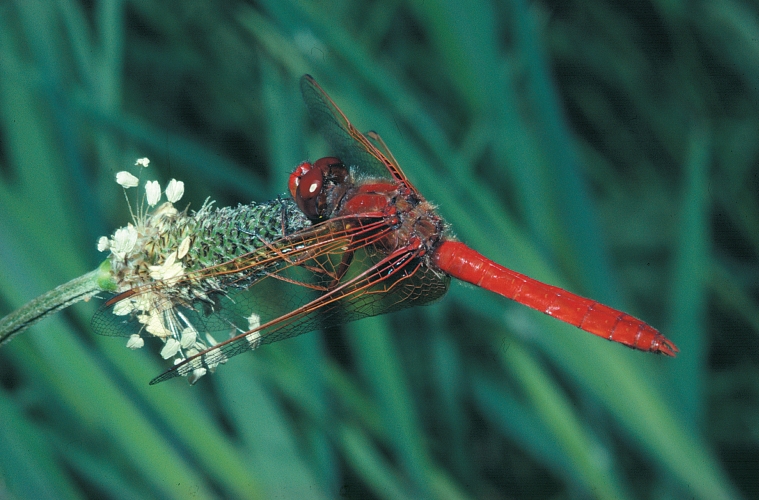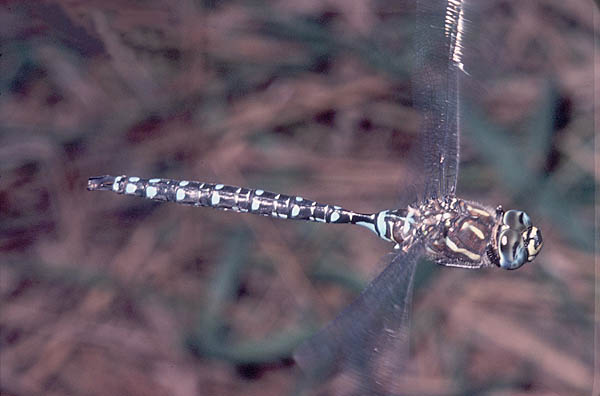I was chatting wth my grandson, Jake, 8, the other day about dragonflies.
“They land on you and they bite,” said Jake.
I said I had never had a dragonfly land on me, not once in all my years on the planet, and I had never been bitten by one.
Then, I mentioned to Jake that Rob Cannings, Canada’s top expert on dragonflies and other insect creatures, was a friend. I said I would email him and ask him to give us an expert answer.
Rob worked as the Curator of Entomology at the Royal British Columbia Museum for more than 30 years and also managed the Natural History section from 1987 to 1996. He is also the author of a popular book and numerous pamphlets on dragonflies.
The next day, Rob answered with a wonderful email that I want to share here because it is so informative.
My son, Peter, who has not the slightest interest in dragonflies read Rob’s email and kept on reading and reading. I said, “What? You are this interested in dragonflies?” To which he replied, “Not really, but this is so interesting.” Now that’s high praise indeed. Kudos to Rob for being able to reach an audience.
So here is Rob Cannings reply to Jake. I thought it was not only a very kind gesture but a first-class, educated response.

Hi Jake
Great questions!
Yes, dragonflies do land on people. When people are sitting still at the water’s edge, they look just like logs or rocks to dragonflies, so why not land?
In other words, dragonflies don’t land on people because they are people, but because motionless people make good places to rest.

However, if you are walking or waving your arms around, they probably will stay away. Also, many dragonflies seem to prefer to land on white objects like pale rocks and old bare logs, maybe because white surfaces reflect light and heat and help keep the insects warm.
So if you wear a white shirt or pants where dragonflies are active, and stay still, a dragonfly will more likely land on you. Particular kinds of dragonflies land on people more than others do. There is a rather rare one called the Black Petaltail, which lives around wet subalpine habitats in our western mountains — the best place to find them in your area is up around Yew Lake in Cypress Park (West Vancouver).
These dragonflies are well-known for being tame and settling on people.
You can divide dragonflies into two large groups depending on their general behaviour.
One group, the “perchers” land a lot, on plants, rocks, lily pads, and so on from which they make short flights to catch flying insect prey.
In general, these are the ones that usually land on people – like the pretty little “meadowhawks”, which are mostly bright red.
Another group, the “flyers”, like the name suggests, fly much of the time, patrolling the edges of ponds and lakes and roadsides, looking for prey or mates.
The most obvious of these are the big dragonflies (the males are mostly marked with blue) called “darners”. When they do rest, it’s mostly up in trees or shrubs.
I’ve attached a photo of me with a dragonfly perched on my nose. I cheated a bit here. A friend caught the dragonfly in a net and carefully (holding the wings together above the body between his fingers) placed the insect on my nose. He was able to get a quick picture before the dragonfly flew off.
This is one of the little dragonflies called “whitefaces” — black and red (or yellow), all with bright white faces. They are “perchers”.

The second photo is a Cardinal Meadowhawk (a “percher”) and the third is one of the darners (a “flyer”).
Now, do dragonflies bite?
Well, they’re built to bite and chew prey – for their size, they have strong, sharp jaws (they move side to side, not up and down).
Adult dragonflies usually catch their insect prey while flying, grabbing a fly or some other insect (sometimes as big as another dragonfly or a butterfly) with their spiny legs and munching on it with those big jaws.
Because people are not dragonfly food, dragonflies do not normally bite people.
Insects that bite people are almost always female flies or bugs that need the nutrition from blood to produce eggs (mosquitoes, black flies, horse flies, bed bugs, and so on).
I know of only one situation where a dragonfly will bite a person – if you catch a big one and, taking it out of the net, hold it in the wrong way so that it can nip you with its jaws.
This has happened to me. For the dragonfly, it’s an automatic reaction in self-defence.


















What a wonderful and informative e-mail from Rob! I do love dragonflies and love to watch them cruising through the air in my back yard.
Comments are closed.